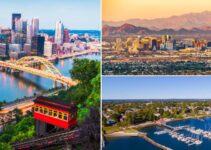Back in 1992 Bruce Springsteen was lamenting the problem of “57 Channels (And Nothin’ On).” In those days he was throwing shade at cable television. Twenty-five years later, it’s social media channels and the surplus of choices that are available. And this time around the problem isn’t the lack of content, it’s more like “500 Channels (And So Much To Share).” So how does a local government, with limited staff and time resources, figure out which channel or channels will be the most effective for its purposes?
The first thing to do is decide what information your city, town or village wants to push out to your citizens. Is it only emergency information? Do you want to publicize community events? Would it be helpful to poll your citizens about certain topics before enacting a law or starting a development project? Do you want your citizens to attend more board meetings? Are you interested in drawing more tourism? Once you know the what, and how much is practical for your staff to post on social media, then you can decide on the channels that will best fit your needs.
Here’s a rundown of some of the top-used social media channels that local governments are using and examples of how they can be put to use:
This is still the biggest of all the social media channels. Facebook can be thought of as the “living room” in your social media “home.” It’s where your citizens can come to interact with others in the community, ask questions, share ideas, leave messages, and browse through photos and community news. It’s often recommended that your Facebook page be updated one to two times a day. Content is usually informational, celebratory, personable.
Examples:
How can you say anything worthwhile or meaningful in only 140 characters? You’d be surprised. This platform is a great place to push info out to your constituents quickly and succinctly. Announce severe weather updates, post crime prevention tips or time-sensitive information such as Amber alerts, remind followers to attend events and give real-time updates with photos, let people in and out of your community know about job opportunities, or tweet public service announcements. This fast-paced channel provides your local government the opportunity to be in touch with your citizens ‘in the moment.’
Examples:
YouTube
If you’re looking for a way to promote your community’s tourism appeal or economic development opportunities or highlight the work that your municipal departments do on behalf of your citizens, videos on YouTube can be very useful. Of course, you’ll want to put your best foot forward, so keep in mind that producing quality video can be costly. Be sure to evaluate the staff resources, vendor costs and time needed before jumping onto YouTube.
Examples:
Think Pinterest is all about recipes, wedding planning and crafts? Not by a long shot. Since its inception, creative users have found unique ways to use this ‘digital scrapbook’ social media channel. For instance, some local governments have developed boards to feature event photos, highlight the community’s history, share police or firefighting training activities, showcase new municipal services or facilities, and focus on specific departments to show how the work they perform makes daily life in the community better. With a good plan before you start, your municipality’s Pinterest page can be your most valuable and effective communication tool. As the saying goes, “a picture is worth a thousand words.”
Examples:
This is a photo-sharing platform and it’s managed using a smartphone (you can download the free app to your iPhone and some Samsung and Android devices). It can also be managed from your PC, but uploading images requires a third-party tool. Instagram is great for promoting your community visually – historic landmarks, festivals, natural landscapes, sports events, etc. While this is a fairly new channel for most local governments, it is growing in use.
Examples:
Additional resources:


